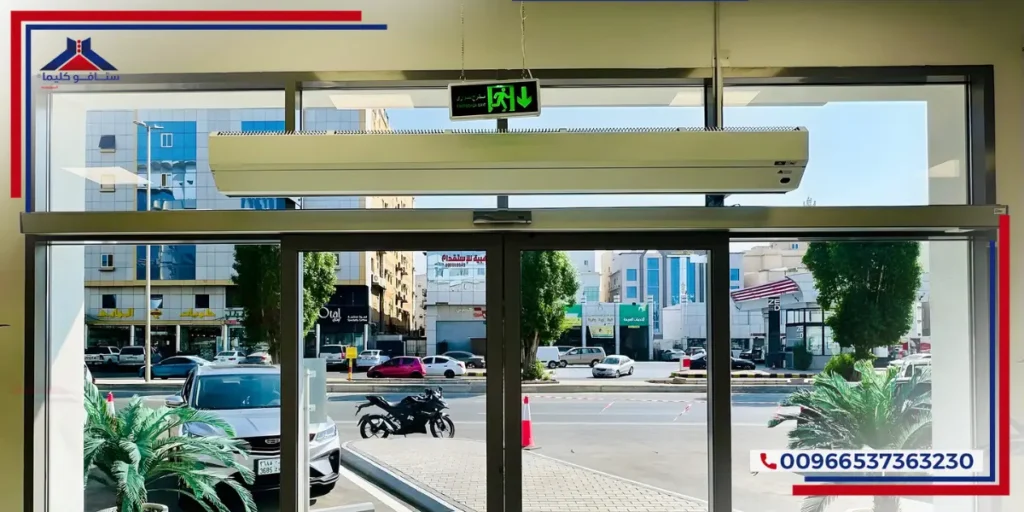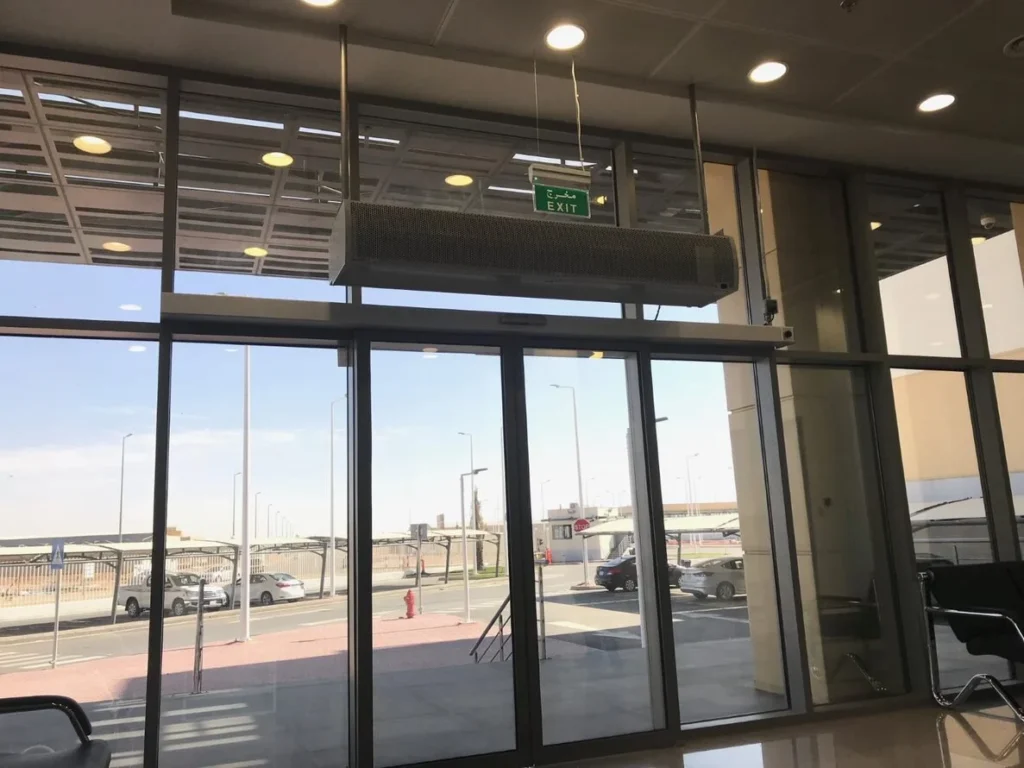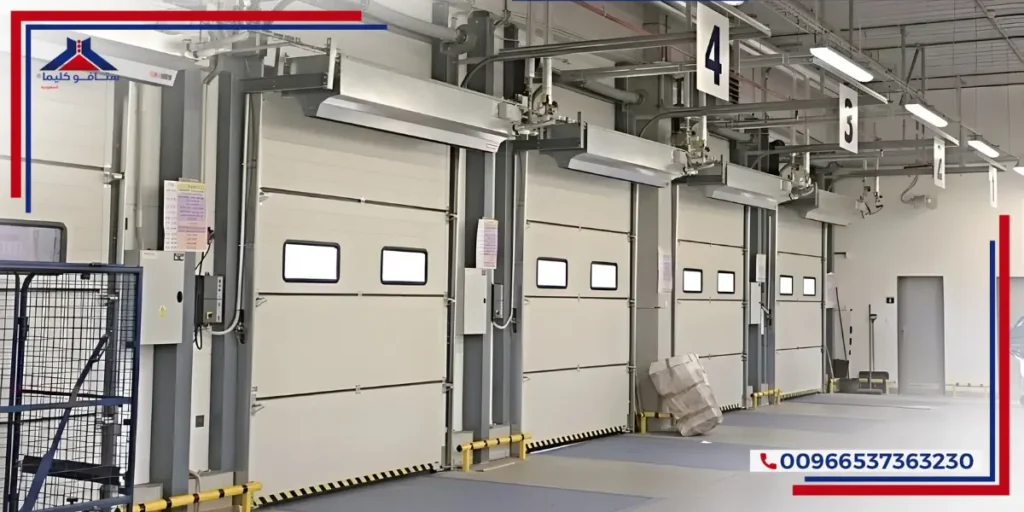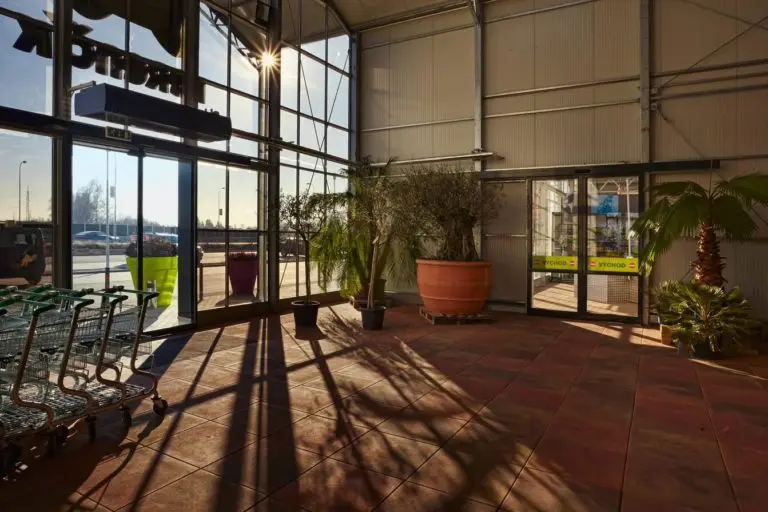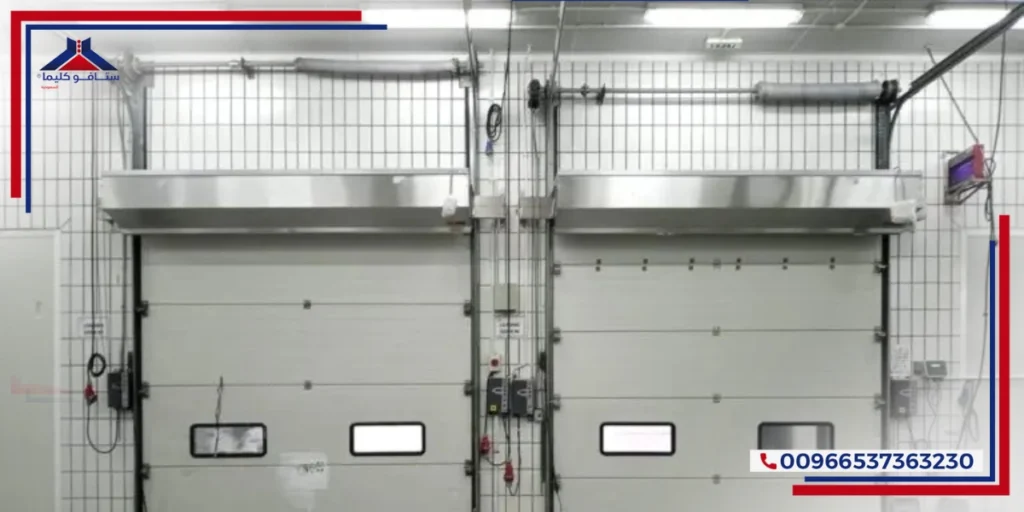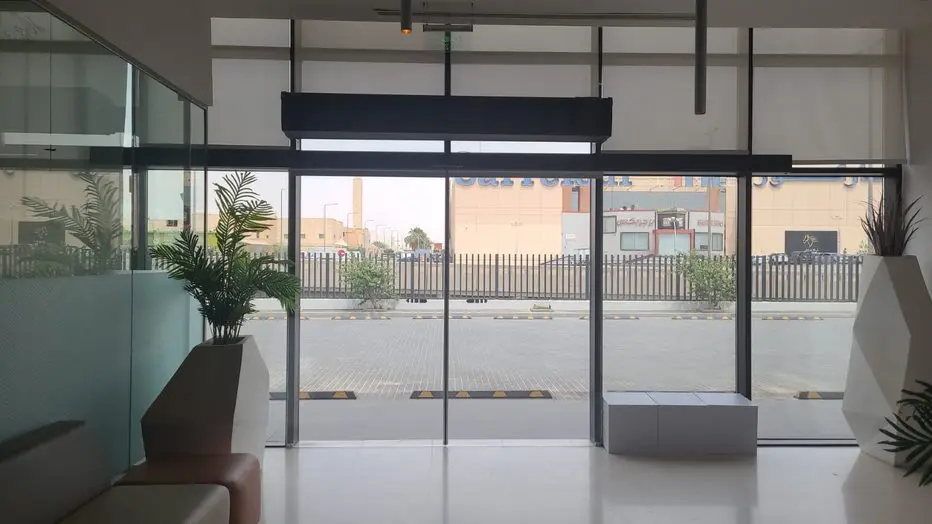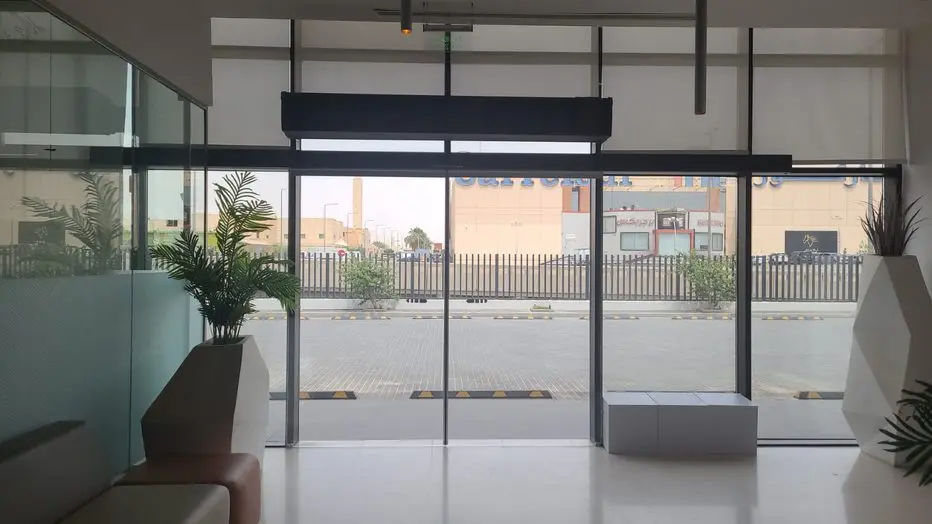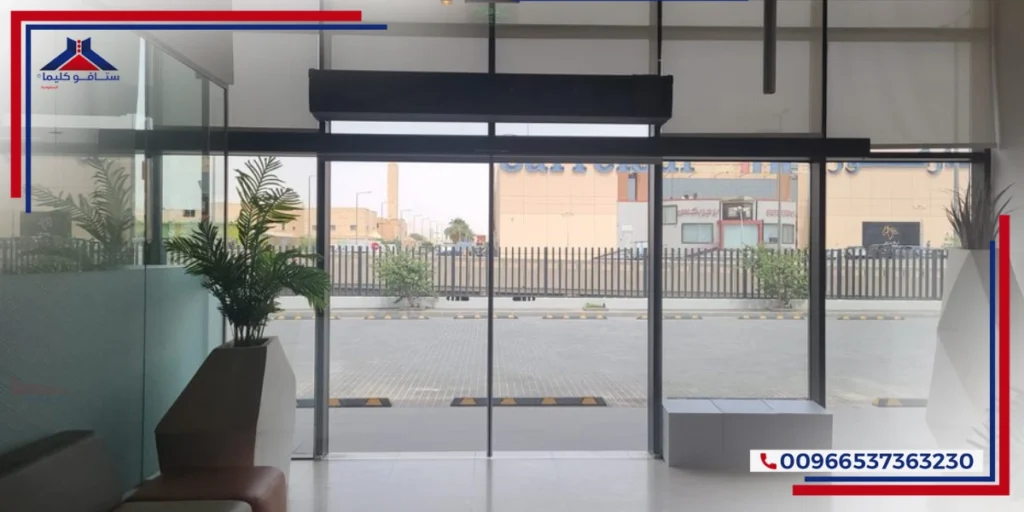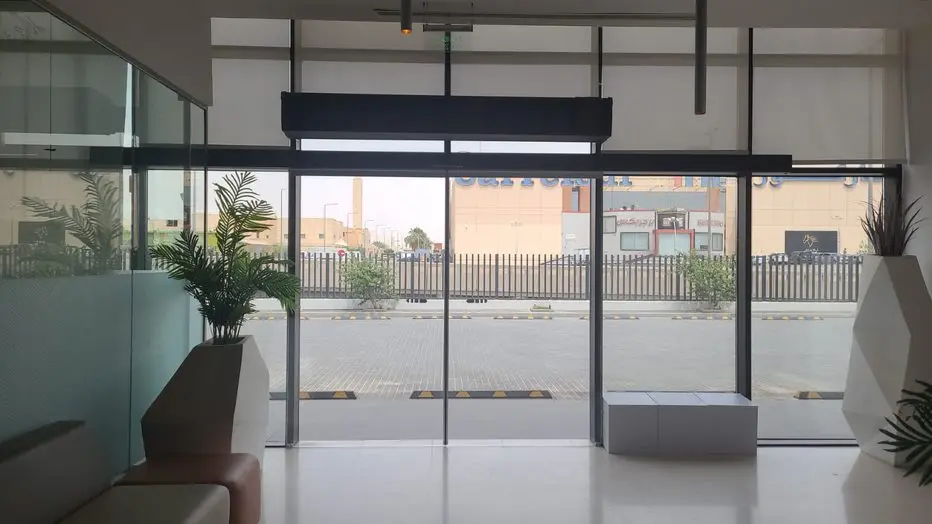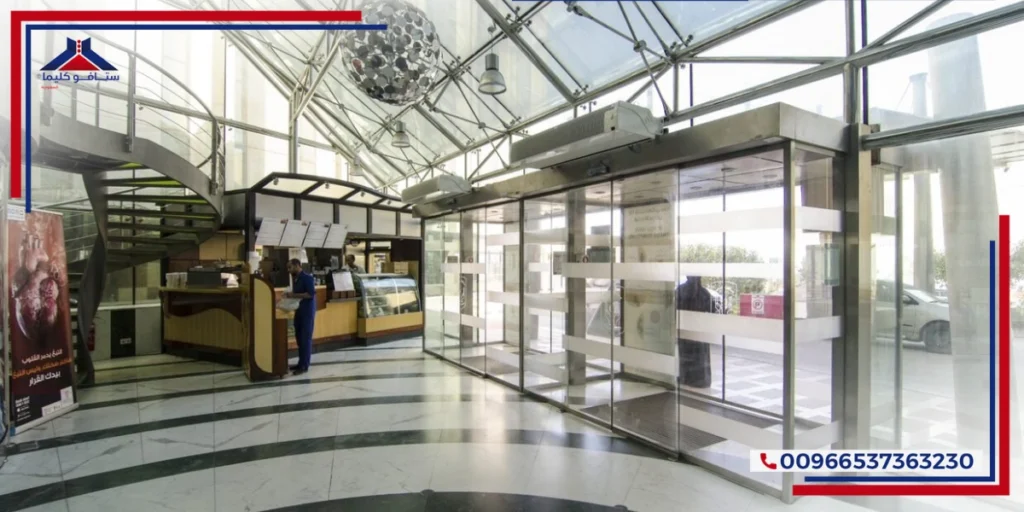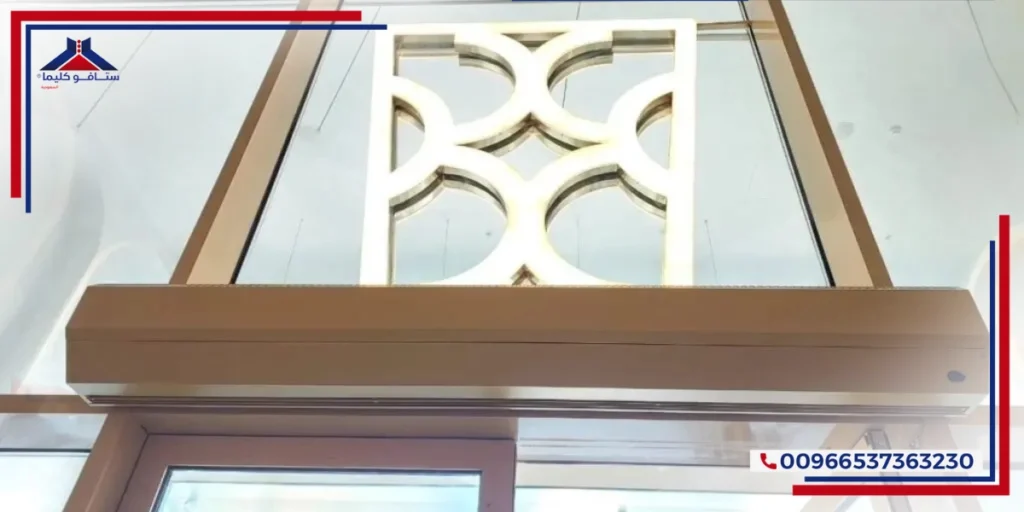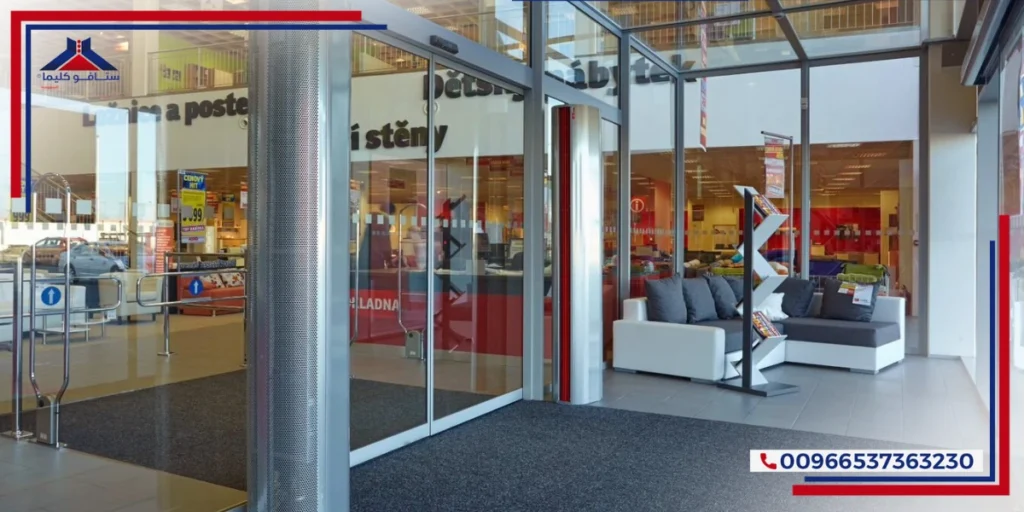Discover the key differences between industrial and commercial air curtains, and learn how to choose the right one for your needs. This article helps you understand the uses of each type and their impact on your operational environment.
Continue reading to explore important details that may influence your next decision.
Table of Contents
ToggleWhat Are Air Curtains?
Air curtains are mechanical devices typically installed above doors or entrances to create a barrier of high-speed airflow. This air barrier prevents air transfer between the interior and exterior, helping to maintain the temperature inside and preventing the entry of dust, insects, and pollutants.
Advantages of Commercial Air Curtains
- Effective Temperature Control: Commercial air curtains help maintain optimal indoor temperatures, reducing heat or cooling loss when doors are opened.
- Preventing Insect and Pollutant Entry: They provide an effective barrier that prevents insects, dust, and smoke from entering indoor spaces, ensuring a clean and safe environment.
- Energy Consumption Reduction: By preventing air exchange between indoors and outdoors, air curtains reduce energy consumption for heating and cooling systems, leading to lower energy costs.
- Customer Comfort: Air curtains maintain a comfortable indoor environment, enhancing the customer experience in commercial spaces such as shops and restaurants.
- Ease of Installation and Maintenance: Commercial air curtains are designed to be easy to install and maintain, reducing the costs and effort required for upkeep.
Read also: RoI from Installing Air Curtains in Companies and Factories
Uses of Commercial Air Curtains
- In Large and Small Stores: Air curtains prevent heat or cooling loss as customers enter and exit, improving energy efficiency and enhancing the shopping experience.
- In Restaurants and Cafes: They help maintain a comfortable indoor atmosphere for customers and prevent the entry of insects and unwanted odors.
- In Hotels and Residential Buildings: Air curtains are used at entrances to provide a clean and comfortable environment, increasing guest satisfaction.
- In Hospitals and Clinics: They are used to maintain a healthy environment by preventing the entry of contaminants, thereby enhancing hygiene and safety standards.
- In Airports and Train Stations: Air curtains are used to control the indoor climate in high-traffic areas, improving traveler experience and reducing energy costs.
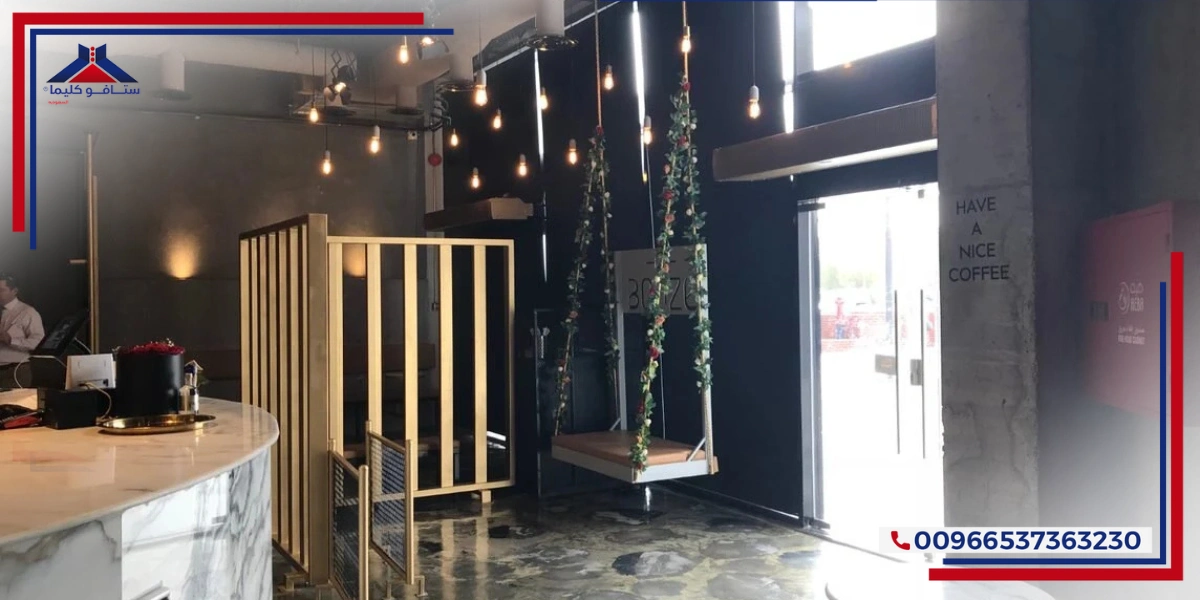
Advantages of Industrial Air Curtains
- High Airflow Power: Industrial air curtains feature stronger airflow compared to commercial types, making them capable of handling large spaces and harsh environmental conditions.
- Durable Design: These curtains are made from strong, weather-resistant materials, such as high-quality metals, making them suitable for intensive and long-term use in industrial environments.
- Large Size: Industrial air curtains are available in larger sizes to cover wide entrances, such as those in factories and warehouses, and can accommodate tall door heights.
- Temperature Resistance: They are capable of operating in extreme temperatures, whether in hot or cold environments, making them suitable for a wide range of industrial applications.
- Energy Efficiency: Industrial air curtains help reduce energy costs by preventing the loss of conditioned or heated air, and maintaining optimal temperatures within industrial facilities.
Uses of Industrial Air Curtains
- In Factories and Warehouses: Industrial air curtains are used to maintain temperature levels within these facilities and to prevent the entry of dust and insects, improving working conditions and preserving the quality of stored products.
- In Distribution and Shipping Centers: They help maintain a stable indoor environment, protecting goods during shipping and storage, and reducing energy losses.
- In Food and Beverage Factories: Air curtains are used to prevent contamination of food products by blocking unfiltered external air and pollutants, contributing to maintaining health standards.
- In Chemical Manufacturing Plants: They are used to protect chemicals from external influences, such as temperature or humidity changes, and to maintain a safe working environment.
- In Water Treatment Plants: Air curtains help prevent external contaminants from entering and maintain a clean and safe environment for workers.
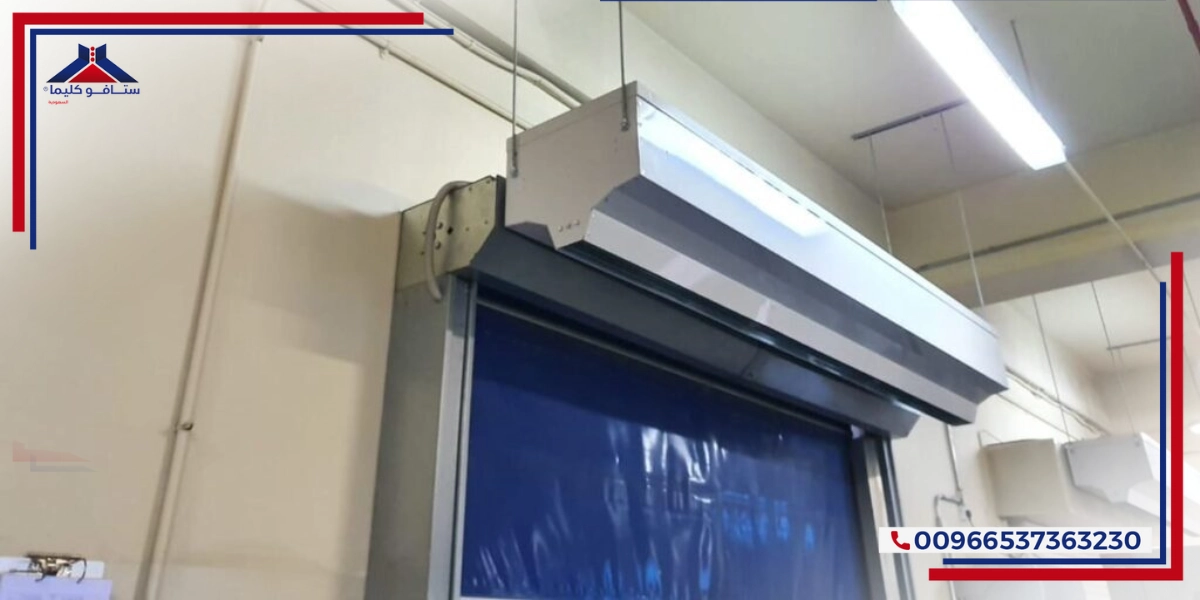
Key Differences Between Industrial and Commercial Air Curtains
Power and Air Control Capability:
- Industrial Air Curtains: These have higher air thrust and greater air control capability, making them suitable for large entrances and expansive spaces. Industrial environments require stronger airflow to prevent unwanted air exchange between the inside and outside.
- Commercial Air Curtains: These have lower air thrust, designed to handle smaller to medium-sized entrances, such as those in shops and restaurants. These curtains focus on customer comfort and protecting the shopping environment.
Design and Materials:
- Industrial Air Curtains: Made from more durable materials, such as strong metals and weather-resistant components, to withstand heavy use and harsh industrial environments.
- Commercial Air Curtains: Designed with less robust materials but sufficient for less demanding commercial settings. The focus here is on aesthetics and ease of maintenance, along with functional performance.
Size and Coverage:
- Industrial Air Curtains: Available in larger sizes with broader coverage to fit large industrial entrances and tall doors.
- Commercial Air Curtains: Typically smaller, suitable for standard commercial doors, with an emphasis on effective coverage without the need for larger units.
Cost:
- Industrial Air Curtains: Generally more expensive due to their durability and higher performance, along with the occasional need for regular maintenance to ensure continuous operation.
- Commercial Air Curtains: Generally less expensive, designed to meet the less demanding needs of commercial environments.
Browse also: Using Air Curtains to Reduce Air Leakage in Commercial Buildings
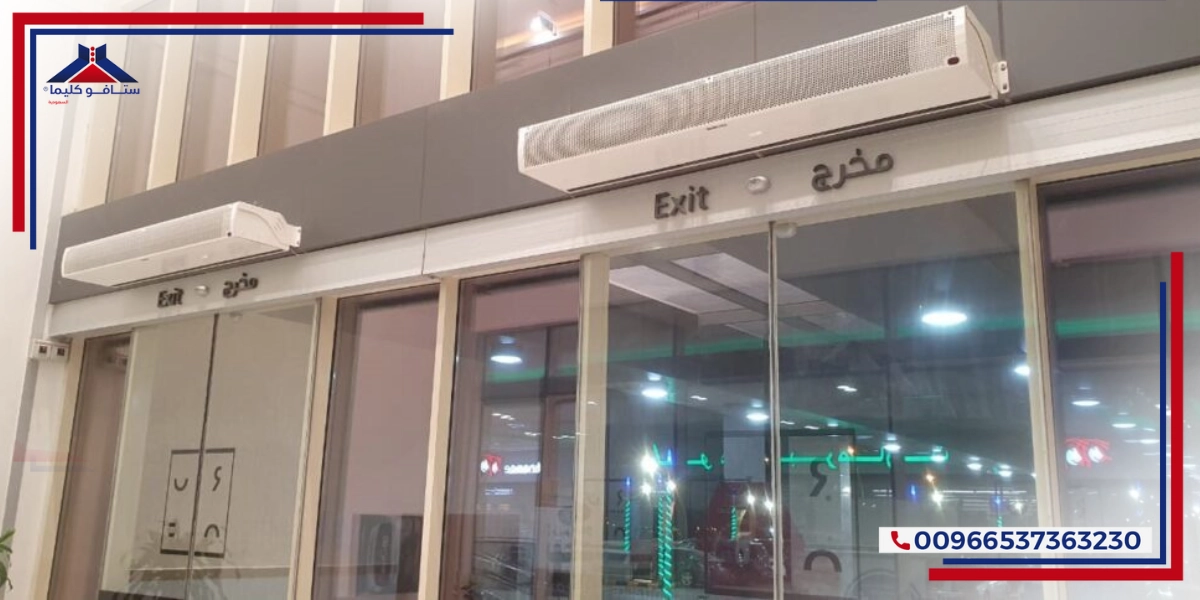
Factors to Consider When Purchasing Industrial or Commercial Air Curtains
- Surrounding Environment and Temperature: Consider the local climate and weather conditions. If you are in an area with high heat or humidity, choose air curtains designed to withstand these conditions and operate efficiently at different temperatures.
- Entrance Size: Measure the size and height of the entrance where you plan to install the air curtains. Wide or tall entrances require larger air curtains with higher thrust to cover the space fully and prevent air exchange between inside and outside.
- Energy Consumption: Ensure you choose energy-efficient air curtains, especially if they run continuously. Energy efficiency helps reduce operating costs in the long term.
- Noise Level: In environments that require quietness, such as offices or restaurants, opt for air curtains that operate at a low noise level to avoid disturbing customers or employees.
- Installation and Maintenance: Choose air curtains that are easy to install and maintain. Ensure that maintenance services and spare parts are available locally to guarantee easy access to technical support when needed.
- Durability and Quality: Make sure the air curtains are made from high-quality materials and are designed to withstand intensive use, especially in industrial settings that may require greater durability.
- Purpose of Use: Determine whether you need air curtains for commercial or industrial use. Requirements differ based on the environment, with industrial settings needing more powerful and effective curtains compared to commercial ones.
- Dust and Insect Control: If the air curtains will be used in areas exposed to dust or insects, choose air curtains that are effective in preventing these elements from entering.
- Compliance with Standards and Certifications: Ensure that the air curtains you plan to purchase comply with local and international quality and safety standards. Certified products guarantee reliable and safe performance.
- Control and Operation Options: Some air curtains come with advanced control options such as remote controls or even automatic operation based on motion or temperature sensors. Choose what suits your needs and desired level of comfort.
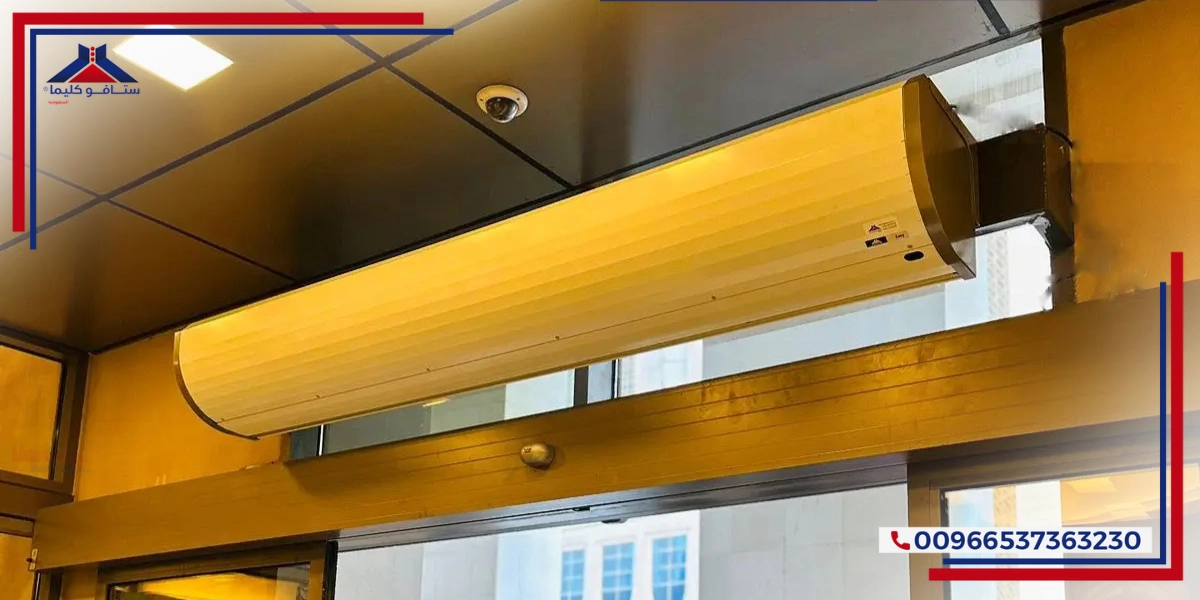
Installation of Air Curtains for Stavoklima's Industrial and Commercial Projects
Here are some Stavoklima air curtain installation projects in factories and retail stores across Saudi Arabia:
1. Li Pico Air Curtains at PepsiCo Factory:
Stavoklima's Li Pico air curtains played a crucial role in improving the working environment inside the PepsiCo factory. They were installed to ensure smooth employee entry while maintaining stable temperatures.
These curtains not only improved comfort but were also highly effective in preventing the entry of dust and unpleasant odors from the outside, creating a cleaner and healthier indoor environment.
Additionally, they helped achieve important environmental goals for the company by reducing energy consumption, making them a sustainable and integrated solution that meets PepsiCo's long-term needs.
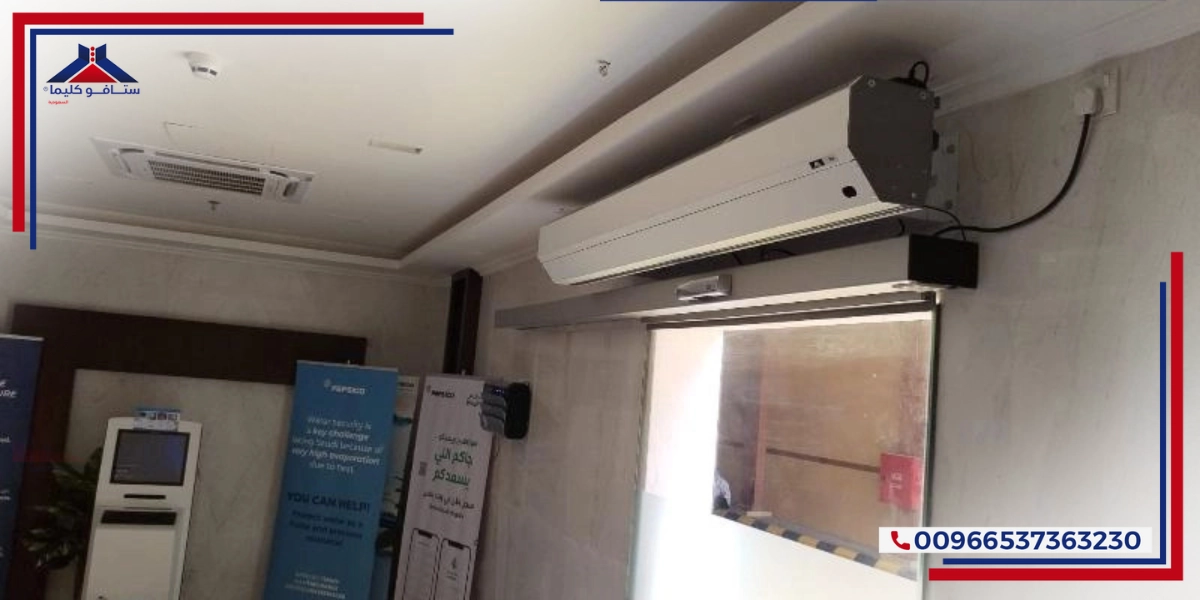
2. Axi & Li Pico Air Curtains at Al-Salehia Factories:
Al-Salehia factories installed Axi & Li Pico air curtains from Stavoklima to enhance indoor air quality and protect the work environment from dust and pollutants. These air curtains contributed to reducing energy costs and improving employee comfort, leading to increased productivity and the achievement of safety and quality goals.
This choice reflects Al-Salehia's commitment to providing a healthy and advanced work environment that aligns with its leadership aspirations in healthcare.
Read also: Uses of Air Curtains in Pharmacies and Beauty Centers
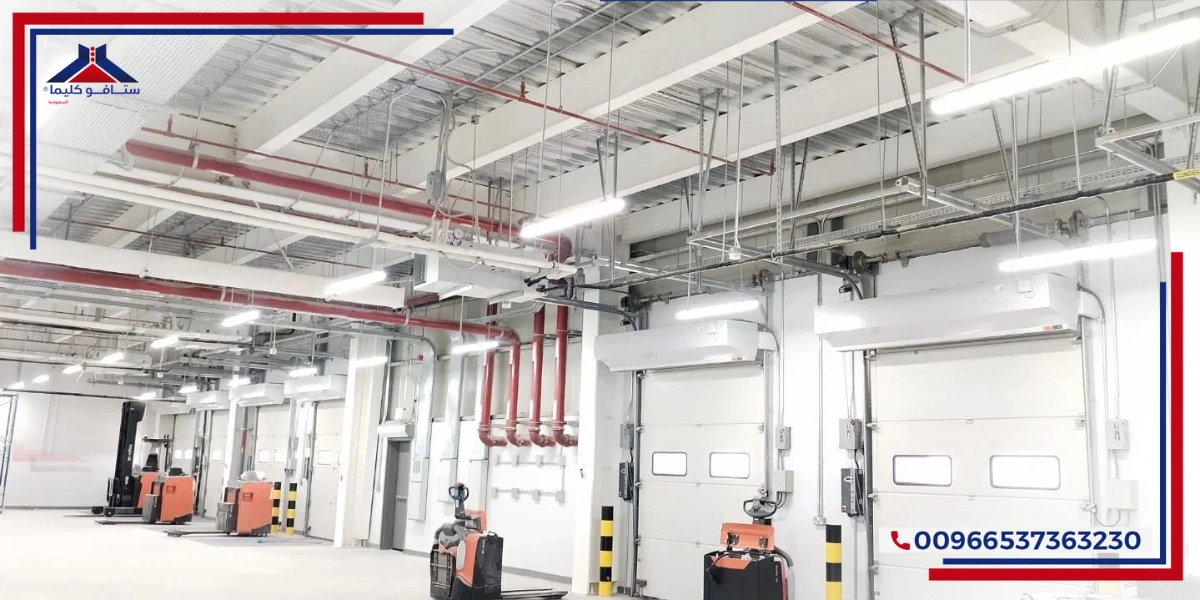
3. Li Pico Air Curtains at Safa Investment Company:
Safa Investment Company improved indoor air quality at its headquarters by installing Li Pico air curtains from Stavoklima. These curtains helped reduce energy costs, minimize dust and pollutants, and create a more comfortable and safe work environment for both clients and employees. This integrated solution reflects the company's commitment to providing a healthy and sustainable work environment that supports its investment goals.
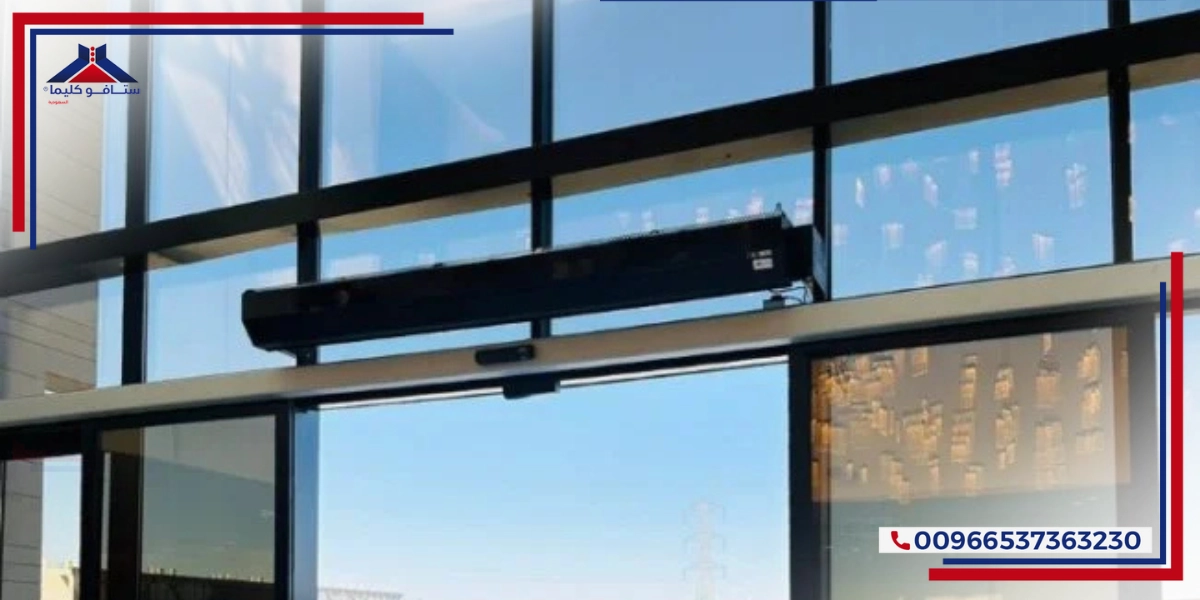
Stavoklima for Installing the Best Industrial and Commercial Air Curtains in Saudi Arabia
If you are looking to install high-quality air curtains in Saudi Arabia, Stavoklima is an excellent choice. With a strong reputation for offering the best industrial and commercial air curtains, Stavoklima provides innovative solutions to meet all your needs.
Whether you need air curtains for a factory, warehouse, store, or restaurant, Stavoklima offers the ideal solutions in Saudi Arabia. With exceptional quality, reliable installation, and maintenance services, you can count on Stavoklima to provide a comfortable and energy-efficient indoor environment.
For the best solutions in installing industrial and commercial air curtains in Saudi Arabia, contact Stavoklima today or visit our website to receive a free consultation and a customized quote for your needs.




